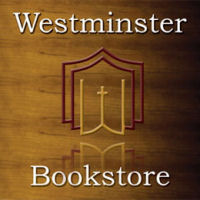It is popular in modern canonical studies to believe that the New Testament authors “wrote unaware of their own authority and without any intention that their writings would be ‘Scripture’” (119). In fact, I can attest that as a new Christian I believed this for years, not really knowing any better. And a form critic I was not! The chapter is one that I would guess even average Christians could read and benefit a great deal from.
Kruger argues in this chapter of The Question of Canon that “the New Testament authors, generally speaking, demonstrate awareness that their writings passed down authentic apostolic tradition and therefore bore supreme authority in the life of the church” (121). Kruger says that if one requires the word “Scripture” to be used in order to consider a reference one bearing apostolic/divine authority, then that misses the point that these authors “wrote books that they understood to contain the new apostolic revelation about Jesus Christ and therefore to have supreme authority in the church” (122).
a. Paul’s Letters. Kruger says, for example (and demonstrates well, I think) that Paul’s writings bear numerous marks of Apostolic self-awareness. Not only does he openly defend his apostolic authority and the divine nature of his message in Galatians, but in 1 Thessalonians he insists that his letter be read publicly in the same way it was customary to read the Old Testament texts. Kruger summarizes several pages analyzing the Pauline letters in three ways: “Paul (1) affirms his own apostolic authority to speak for Christ, (2) makes it clear that this apostolic authority not only applies to his oral teaching, but is being employed in the very letters that he is writing, and (3) indicates that anyone who rejects his teaching (oral or written) is thereby rejecting the commands of Christ and subject to prophetic condemnation or excommunication” (129-130).
b. The Gospels. It’s common to point to the anonymity of the Gospels as a negative against their authenticity as Scripture. However, the Old Testament history books such as Chronicles, Kings, Samuel, etc. are anonymous. “The anonymity of the Gospels, far from diminishing their scriptural authority, actually served to increase it by consciously placing the Gospels ‘in the tradition of Old Testament historiography’” (130-131).
The Gospel of Matthew, Kruger argues, saw itself as completing the Old Testament story. He bases this on the unique way that Matthew begins his Gospel. His discussion of this issue is worth the reader spending time over. His comparison between the opening words of Matthew in the Greek and the LXX name of the book of Genesis are very insightful, as well.
The Gospel of Mark, Kruger points out, begins with language that “matches language from the opening of some Old Testament prophetic books” (132). He also spends time drawing out the connection of Mark to the Apostle Peter by pointing to the similarity of the structure of Mark and Peter’s sermon in Acts 10:34-43.
The Gospel of Luke has an introduction with highly significant content. For starters, he is confident that what he is conveying is apostolic in origin, using the uncommon word “eyewitnesses.” Kruger concludes his section on Luke by suggesting that “Luke is presenting his Gospel as the embodiment of the authoritative apostolic ‘word’ that had been delivered and entrusted to him” (141). Later, Kruger says, “Luke is presenting his Gospel as an apostolic document designed to show how Christ completes the story of the Old Testament and thereby to bolster confidence in foundational Christian truths” (143).
The Gospel of John. Kruger spends some time speaking of authorship, but what is of greater interest is John 21:24, which Kruger says seems to be “a declaration to the reader that Jesus’ promise in 15:26-27 to send authoritative witnesses has been fulfilled - the very book they are reading is the authoritative testimony of Jesus’ Spirit-filled disciples” (137, his italics). He also mentions something that I found very interesting - namely, the phrase γεγραμμένα ἐν τῷ βιβλίῳ τούτῳ doesn’t occur only in John 20:30, but also in LXX Deut. 28:58; 2 Chron. 34:21; and Jer. 25:13. He calls these parallels “suggestive that the author of the Gospel of John saw himself in a prophetic role” (138, his italics).
c. Other Texts. Kruger also spends time looking at Revelation 1:1-3, 1 John 1:1-4, 2 Peter 3:2, and Hebrews 2:1-4 to support his thesis, though readers will have to get the book if they want to see Kruger’s discussion of these specific texts. I found the discussion interesting, but we need to leave some mystery so folks will actually buy the book!
Kruger concludes the chapter by bringing things back home. It’s important to remember that Kruger’s larger purpose here is to defend the intrinsic model of canon. “If the New Testament writers were aware of their own authority, then this gives further confirmation to the intrinsic model. Although they could not have foreseen that the church would be guided by exactly twenty-seven books, they did intend to write books that would guide the church” (154).
Subscribe to:
Post Comments (Atom)




No comments:
Post a Comment
Before posting please read our Comment Policy here.
Think hard about this: the world is watching!